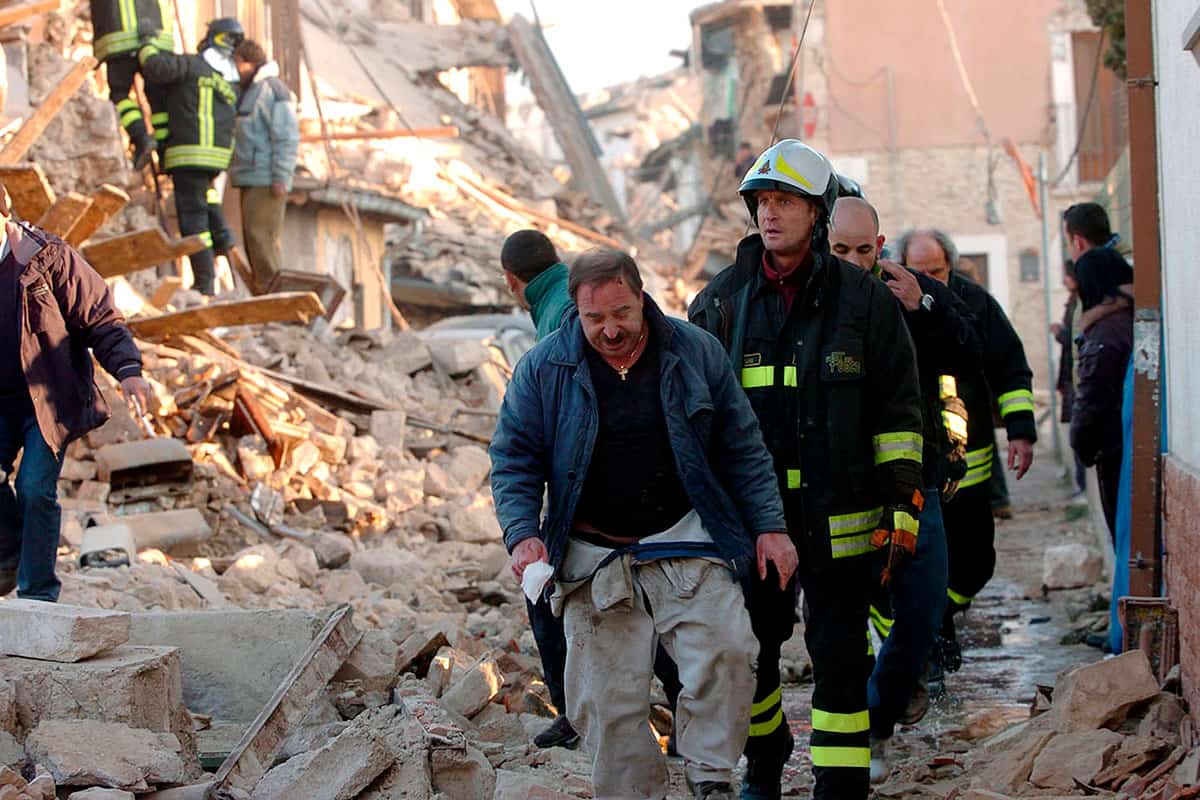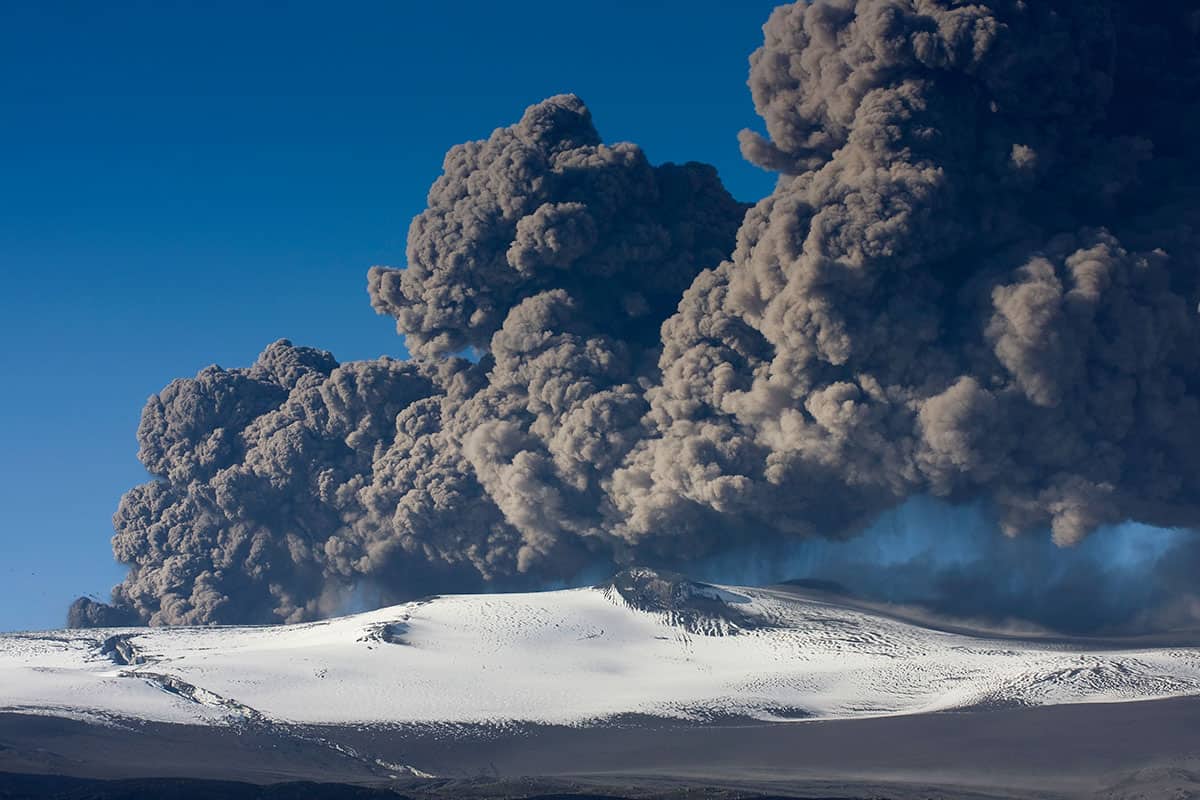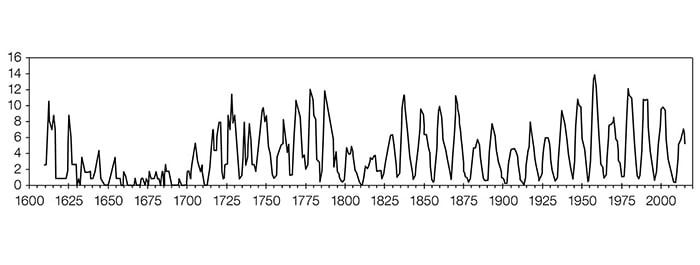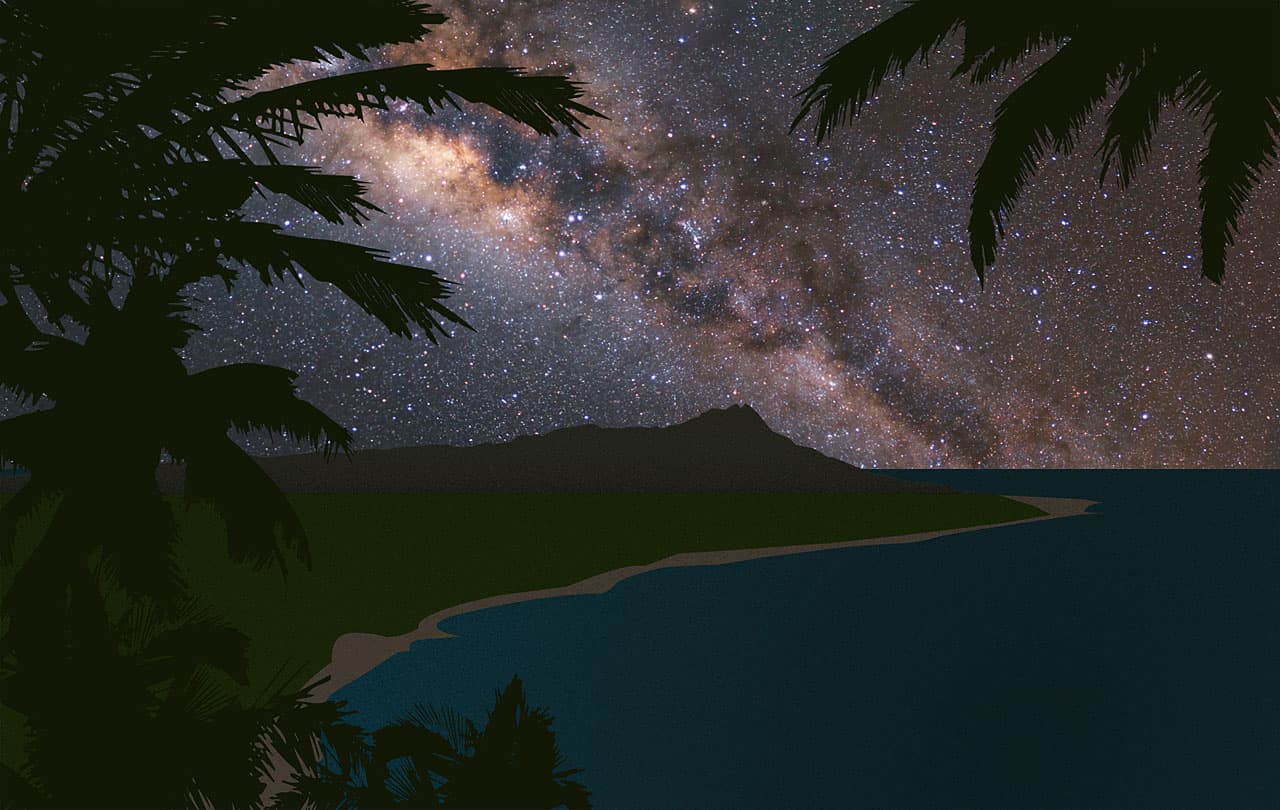“Ensuring government is properly informed by science is something that all scientists should be involved in.” So wrote Sir John Beddington, the UK government’s chief scientific adviser from 2008 to 2013, in the book of essays Future Directions for Scientific Advice in Whitehall. Beddington’s goal seems a noble aim given that so much of the modern world – from mobile communications and medicine to disease control and climate change – is intrinsically linked to science. But how exactly should we heed his advice?
Many governments and policy-makers have professed an interest in science. Jean-Claude Juncker, current president of the European Commission (EC), wrote in Future Directions that the European Union needs to “make sure that Commission proposals and activities are based on sound scientific advice”. Meanwhile, the Organisation for Economic Co-operation and Development (OECD) concluded in its recent report Scientific Advice for Policy Making that “science is truly at the centre of many important policy issues and scientists are increasingly visible and, in many cases, increasingly vulnerable, in policy-making processes”.
Scientists often say that our immediate concern should be to improve policy-makers’ understanding of “the imperfect nature of science” (Nature 503 335). We believe, however, that what’s even more important is to improve scientists’ understanding of the imperfect nature of politics. Drawing on our experiences of the difficulties of bridging the scientific and political worlds – one of us (JT) served on the UK’s civil-contingencies secretariat, while both of us have contributed to meetings between scientists, politicians and political advisers sponsored by the International Risk Governance Council – we have distilled our thoughts into 12 top tips for scientists who have to advise politicians on how to deal with slowly developing risks that could have catastrophic economic, social or environmental consequences.
When science meets politics
Before we get to that advice, let’s briefly look at science in government and what politicians seek from scientists. All governments have to make three types of decision. They need to fulfil a promised programme, such as backing renewable energy. They need to solve problems and manage unplanned crises as they arise. And they need to prepare for potential future problems, which includes maintaining their own long-term political credibility. Scientists have a role to play in all three areas and those who wish to be involved are, perhaps surprisingly, helped (in the UK at least) by ongoing cuts to the size of the civil service.
Such job losses mean that civil servants increasingly need – in fact, actively want – advice from different sources, with the civil service itself being more focused on implementing that advice. Access to policy-makers is, if anything, becoming easier as the UK government is, in principle, committed to open, evidence-based policy-making, with all major government departments now having their own science adviser.
But what do we mean by “risk”? In their 1985 book Perilous Progress: Managing the Hazards of Technology, Robert Kates, Christoph Hohenemser and Jeanne Kasperson define it as “an uncertain consequence of an event or activity with regard to something humans value”. Inherently uncertain it may be, but managing risk is now a core political preoccupation. In fact, a study conducted by the UK Cabinet Office in 2002 noted that the nature of risk had changed for two reasons.
First, the accelerating pace of scientific and technological development means that we are now faced with what are known as “manufactured risks”. These occur when existing risks, such as natural hazards, are compounded by previously unknown or unexpected vulnerabilities, such as cyber attacks or geomagnetic storms. Manufactured risks force governments and regulators to make risk-based policy judgements across a huge range of technologies, many of which – from nanotechnology to energy – have a strong physics component.

The nature of risk has also changed because the world is increasingly interconnected. As a result of the growth in air travel, IT and mobile communications, the global economy and environment are linked at every level. That interconnectedness has brought huge opportunities, but it’s also exposed citizens to distant events such as the spread of the Ebola virus in Sierra Leone last year. These “systemic” risks are now high on the policy agenda in many countries and, again, there are many areas for physicists and mathematicians to get involved in, especially in understanding and predicting the behaviour of networks and other complex systems.
Scientists who wish to become involved are helped by two recent changes in society: people are increasingly unhappy when governments cannot assess and manage risk, while the media increasingly seek independent validation of governments’ policy prescriptions and professed commitment to open, evidence-based policy making. As Beddington went on to say in Future Directions: “What is more difficult is ensuring that science is brought to bear effectively on the questions which policy-makers know matter but which don’t present a single decision moment, or where it is less obvious that science can help.” In other words, individual scientists must make their specialist knowledge and expertise more widely available, especially when it concerns important scientific issues that politicians may not be aware of.
So for scientists who want to get involved, here are those 12 key pieces of advice, based on recent examples of both success and failure.
The not-so-dirty dozen
1. Be aware that scientists are often seen as just another lobby group. This one simple (if unpalatable) fact means that science advice is more than a matter of speaking truth to power. It is also about persuading those who hold power that the advice is reliable, that the adviser does not have a hidden agenda, and that the advice is worth both listening to and acting upon.
2. Know how government policy-making is structured. Government decision-making is complex, and there is a clear distinction between political decision-making and policy-making. We don’t believe it’s helpful for scientists to involve themselves directly in the former (there are many unhappy examples to illustrate our point). Nor is it easy to break through the barriers that government officials erect to protect themselves and their spheres of influence.
But it is realistic for scientists to contribute evidence when new policies are being crafted, especially when governments have declared (as they have in the UK) that they want open and transparent policy-making and also when those scientists are contributing to areas in which economic growth depends largely on exploiting scientific innovation. Governments are increasingly adapting their policy-making machines to accommodate a more systematic scientific voice. Microbiologist Anne Glover’s success in collaborating with the EC on digital communication during her time as the EC’s chief scientific adviser shows what can be achieved when these new structures work.
3. Realize that science is not usually the only, or even the major, consideration. In terms of policy-making, science can be very low down the pecking order. Few ministers have science degrees, and so they tend to reach for experts and advisers in economic, legal and social issues. It follows that science advice is most likely to be listened to if it can be integrated with information from these other fields. But don’t expect politicians to pick out the salient political or economic advantages from a complex mess of science. Do it yourself! The report The Importance of Physics to Economic Growth from the Institute of Physics (which publishes Physics World) is an excellent starting point.
4. Point out the role of your speciality in contributing to the solution of cross-disciplinary problems. The most intractable science-related problems that governments face tend to be cross-boundary, especially in risk analysis, mediation and prevention. This is where governments need to bring teams of scientists from different areas together to develop a solution. It is not always obvious which areas may hold the key to a solution, so in cases of present or future risk, be prepared to consider if you might have something to contribute – and don’t be shy about coming forward.
5. Appreciate the importance of personal contact. The political process is based largely on developing trust and understanding through personal contacts. Scientists who wish to be heard should aim to develop such contacts, rather than banging the drum from the outside. The point of contact will not necessarily be a politician – it may be a committee chair, a departmental science adviser, a civil servant or other member of a government department, or even a lobbyist. The key is to find the right conduit for communication.
6. Be aware of political priorities and the need to engage with them. All too often, researchers with a passion for their subject seem to think that politicians just need to be “put straight” on the science surrounding a particular issue. Research on why certain types of advice are accepted, and others ignored, shows that this approach is ineffective unless it’s framed in terms of the needs and preoccupations of the decision-maker – in this case, that person’s political priorities. These may include the social context (such as how voters in the decision-maker’s constituency might be affected), the economic cost or benefit, and even the practicality of implementing a decision before the next election. To be truly effective, scientists must make themselves aware of the political impact of their advice, and point these out in clear, unambiguous terms. Scientists should also realize that politicians and other policy-makers are constantly bombarded with information, and short, pithy statements are much more likely to be heeded – especially if the writer takes the time and effort to use effective words and phrases that can be borrowed and repeated.
7. Be aware of political timescales. Politicians are primarily concerned with the short term. Any policy with benefits that will be felt only in the distant future is likely to assume less importance than one with benefits that can be proudly displayed before the next election. It follows that scientific advice (which is often concerned with long-term issues) is most likely to be accepted and acted on if at least some short-term benefits can be identified and “sold” to politicians. This is not cynical – it is practical (after all, a politician cannot implement a policy if he or she is not in power).
8. Offer options, not policies. Evidence suggests that science advice is most likely to be heeded if the scientist is perceived as an “honest broker”, integrating scientific knowledge and understanding with other concerns to provide even-handed advice within a policy context. By acting in such a way, scientists can help to break down the often-held political view that scientists are “just another” pressure group, or that they are acting to promote the interests of particular pressure groups.
9. Don’t over-claim. Hubris is as much of a sin among scientists as it is in other specialisms – perhaps more so, since in trying to persuade politicians and the public to take notice, scientists too often tend to overstate their case. In particular, scientists should avoid making predictions. Politicians don’t trust them (having seen so many fail), and are much more likely to be receptive to an understated, even-handed analysis of opportunity versus risk.
10. Keep it as simple as possible, but not simpler. Einstein’s famous dictum is especially appropriate when it comes to providing scientific direction for policy. Politicians and other policy-makers are aware that science is complex, but don’t appreciate (or trust) oversimplification any more than they appreciate over-complexity. The important point in communicating science in a policy context is to focus on those aspects that are relevant to the problem in hand.
11. Be aware that “more research” is seldom an option. The timescales of politics are such that politicians usually need fast answers to immediate problems. It’s counterproductive to use these occasions to push for more support for research, even if that support might be needed. It cannot be said too strongly that requests (or demands) for support for further research simply reinforce most politicians’ belief that scientists, like all other pressure groups, are promoting their views mainly to get a larger share of the financial cake. More cash is more likely only if the arguments for it are separated from the offering of scientific advice on particular issues.
12. Establish long-term gain. Scientific advice is often concerned with long-term issues, but the people who have to implement it (especially politicians and civil servants) often get replaced or change jobs over much shorter timescales. One way to overcome this problem is for scientists to keep an eye on developments (perhaps through a scientific society or other network), to point out short-term opportunities, and to urge that policies based on their advice should be flexible and responsive so that actions can be modified as new information comes in or circumstances change.
Policy in action

One example of scientists working well with politicians and policy-makers took place following the eruption of the Eyjafjallajökull volcano in Iceland in 2010. The potential risk of such an event causing an ash cloud and widespread disruption to air travel had already been identified by the relevant UK government department as part of a national risk assessment process in 2005. Unfortunately, no-one had been found who’d been willing to estimate the likelihood of such an event actually causing such a disruption. That’s because the risk depended on a number of factors – such as the frequency and nature of an eruption as well as atmospheric and weather conditions – that were themselves unpredictable. The risk was held “in reserve” for further study.
So after the Eyjafjallajökull eruption, the government’s then chief scientific adviser was invited to pull together a cross-disciplinary team, including volcanologists, meteorologists and aerosol researchers, to help policy-makers understand the risk of such an ash cloud recurring and to estimate what the “reasonable worst case scenario” might be. The team also asked if Eyjafjallajökull was the very worst thing that could happen, the answer to which was “no”. Much more damaging, though rather less likely, than another ash cloud was the risk of something like a recurrence of the eruption in 1783 of the Icelandic volcano Laki. It produced large quantities of gases, including carbon dioxide and sulphur dioxide, that caused famine throughout western Europe. Such an eruption would cause massive problems not just for transport but for health and agriculture too.
The Eyjafjallajökull eruption provided many lessons about using science to support government policy. First, don’t try to predict risk, because wrong predictions are common and they merely undermine trust in science. Do, however, try to give a best estimate, even if this guess is provisional upon further research, because governments may otherwise interpret “no opinion” as meaning “there is no problem”. Third, form a team of experts that includes not only people from the most prominent relevant discipline but also anyone who has a relevant contribution to make – including policy-makers themselves. Fourth, assess not just the phenomenon but also its impact. And finally, use your team to build networks that can solve problems in other areas, as was the case with the Cabinet Office’s “natural hazards team” containing scientific experts both in government and beyond.
An eruption of risk
Dealing with risk is far from easy. In 2011, for example, six Italian scientists and one government official were charged with manslaughter following the April 2009 earthquake in the city of L’Aquila, their fault consisting of having contributed to the spread of misleadingly reassuring messages to the public about the earthquake risk. Although the six were later acquitted, their case illustrated the legal perils if responsibilities are unclear between governments and their official or unofficial advisers – and if scientists are to be heard safely, they need a formal framework.
Such frameworks exist in countries, such as the UK, that recognize the benefits and challenges of integrating scientific advice into policy-making. Indeed, the OECD report Scientific Advice for Policy Making articulates the essential conditions for an effective and trustworthy science-advisory process – namely, a clear remit to produce advice that’s sound, unbiased and legitimate, and the involvement of a full range of scientists, policy-makers and other relevant parties.
Scientists need to be aware of these two conditions when deciding whether to offer advice, but what’s also important is to know – at a practical level – how to communicate effectively with politicians and policy-makers. We hope, therefore, that our advice will be of help – indeed, one example of good, positive interactions between scientists and politicians occurred in the UK after the 2010 eruption of the Icelandic Eyjafjallajökull volcano (see box). What this incident showed is that the systematic use of science is now part of the policy-making landscape and – for those who have seen how it can work – it is a “gift that keeps on giving”.
Scientists who want their advice to be heeded need to put themselves in the shoes of their policy-making audience. They should make things easy for that audience by pointing out political benefits (if there are any), making connections with other politically relevant areas, and providing appropriate words and phrases that those whom they wish to influence can pick up and use.
These well-established principles of communication may seem self-evident, but if they were that obvious, then many more scientists would already be using them. More of us need to catch on to them if science is to take its rightful, essential place in the hierarchy of political decision-making.





